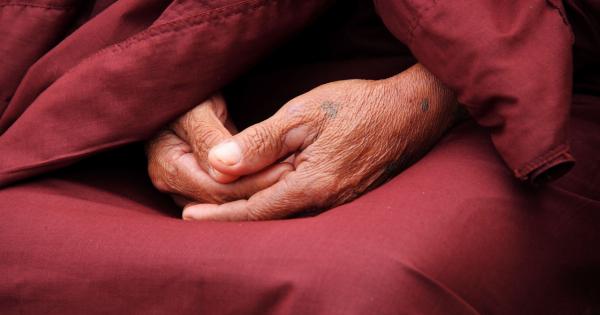Sexual desire and activity are complex and ever-changing aspects of human life, influenced by a wide range of factors such as age, health, hormones, culture, and psychology.
Female sexual prowess, or the ability to experience and enjoy sexual pleasure and satisfaction, is often shrouded in myths, stereotypes, and stigma.
The biology of female sexual response
Understanding the biological mechanisms that underlie female sexual response is crucial to appreciate the factors that affect its peak. The female sexual response cycle includes four phases: desire, arousal, orgasm, and resolution.
During the desire phase, a woman experiences a subjective urge to engage in sexual activity, which can be influenced by psychological, social, and cultural factors, as well as hormonal fluctuations. The arousal phase involves physical changes such as vasocongestion (swelling of genital tissues due to increased blood flow), lubrication, and muscle tension.
The orgasm phase is characterized by rhythmic contractions of the pelvic muscles and intense pleasure and release of sexual tension. The resolution phase occurs after orgasm, characterized by the reversal of the physiological changes and a decrease in sexual tension.
Factors that influence female sexual prowess
Age
Age is a significant factor that affects female sexual prowess. Although the desire for sex may remain stable or even increase with age, the physiology of sexual response may be altered.
As women age, they may experience a decline in vaginal lubrication, vaginal elasticity, and clitoral sensitivity, which can make arousal and orgasm more difficult or less intense. However, these changes are not universal and may vary depending on individual factors such as health, lifestyle, and hormonal status.
Hormones
Hormonal changes also play a crucial role in female sexual prowess.
The menstrual cycle, pregnancy, lactation, menopause, and hormonal therapy can all affect the levels and balance of estrogen, progesterone, and testosterone, which are essential for sexual desire, arousal, and orgasm. For example, estrogen levels are highest during the mid-follicular phase of the menstrual cycle, which may increase sexual desire and pleasure.
After menopause, when the production of estrogen declines, women may experience vaginal atrophy and dryness, which can reduce sexual satisfaction. Hormonal therapy, such as hormone replacement therapy (HRT), can help alleviate some of these symptoms but may also have side effects.
Health
Physical and mental health also play a significant role in female sexual prowess. Chronic illnesses, such as diabetes, cardiovascular disease, cancer, and neurological disorders, can affect sexual response and function.
Medications used to treat these conditions, such as antidepressants and beta-blockers, may also have sexual side effects. Mental health issues such as depression, anxiety, and trauma can affect sexual desire and pleasure. Women who have experienced sexual abuse or trauma may have difficulties with trust, intimacy, and arousal.
Lifestyle
Lifestyle factors such as diet, exercise, smoking, and alcohol use can also affect female sexual prowess. A healthy diet that includes nutrients such as omega-3 fatty acids, zinc, and vitamins A, B, C, and E can help promote sexual health.
Regular exercise can improve circulation, muscle strength, and endorphin release, which can enhance sexual responsiveness. Smoking and excessive alcohol use can reduce sexual desire and impair sexual function.
Partner factors
The sexual partner and the quality of the relationship also influence female sexual prowess. Factors such as trust, communication, intimacy, and attraction can affect sexual desire and satisfaction.
Women who feel respected, valued, and desired by their partner are more likely to experience sexual pleasure and orgasm. Sexual dysfunction or incompatibility, such as erectile dysfunction or premature ejaculation, can also affect female sexual response and satisfaction. Open and non-judgmental communication with the partner can help address these issues.
When does female sexual prowess peak?
The question of when female sexual prowess peaks is complex and cannot be reduced to a simple age or hormonal milestone. The peak of sexual desire and pleasure can vary depending on individual factors such as health, lifestyle, and culture.
However, some studies have suggested that female sexual function may follow a U-shaped pattern, with the highest levels of desire and arousal in early adulthood (20s-30s), a decline in mid-life (40s-50s), and a resurgence in later life (60s-70s).
Several factors may explain this pattern. In early adulthood, women may have higher levels of hormones such as estrogen and testosterone, which are associated with sexual desire and responsiveness.
They may also have fewer health issues and more physical vitality, as well as fewer social and psychological stressors. However, as women enter mid-life, they may experience menopausal symptoms such as vaginal dryness, hot flashes, and mood changes, which can interfere with sexual function.
They may also face heightened responsibilities and stressors related to work, family, and aging parents, which can leave less time and energy for sexual activity. Moreover, cultural beliefs and norms about women’s sexuality may reinforce the idea that sexual pleasure is less important or acceptable in mid-life.
However, as women enter later life, they may experience a shift in priorities and attitudes towards sexuality.
The freedom from reproductive concerns and the expectation of fulfilling social roles may allow women to explore and enjoy their sexual desires more openly and confidently. They may also benefit from improved health and vitality due to better medical care, healthy lifestyle habits, and social support.
Moreover, cultural shifts towards more positive and inclusive views of aging and sexuality may reduce the stigma and shame often associated with older women’s sexuality.
Conclusion
Female sexual prowess is a complex and multi-dimensional aspect of human sexuality, influenced by a wide range of factors such as age, hormones, health, lifestyle, and culture.
Understanding the biology and psychology of female sexual response and the interplay of these factors can help promote sexual health and autonomy. While the question of when female sexual prowess peaks remains open and subjective, it is clear that sexual desire and pleasure can evolve and deepen throughout the lifespan.


























